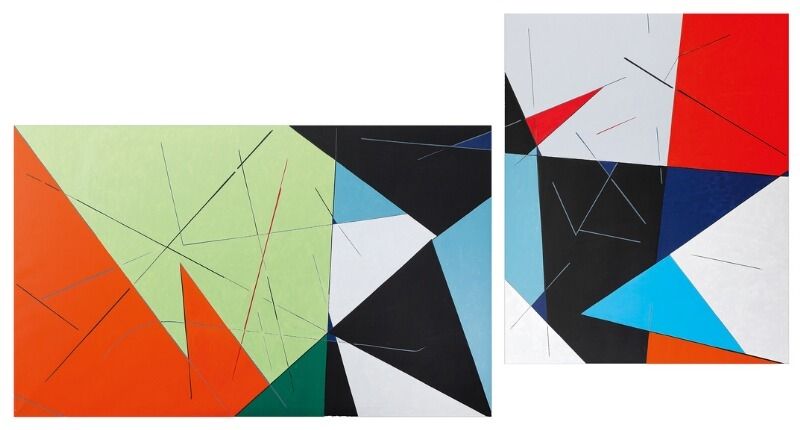About the group
The research group "Forms of resistance" brings together researchers from several fields, with a special orientation towards literature, aesthetics, philosophy, medicine, archive and media studies. The group will shed light on the concept of resistance both on a narrative, thematic level, and on an inner, more formal and theoretical level, aesthetically and technically as well as ethically.
Research interests
The concept of resistance appears directly and indirectly in large parts of modern critical thinking. The term resistance denotes a force that opposes or cancels out another force, and etymologically points to restoration and restitution. Resistance understood as "opposition" reflects this positive dimension and is historically and politically a democratic principle. Terms such as culture, identity and biopolitics show the actuality of resistance, often expressed in various protest movements. Within the aesthetic field, we can also speak of an inner resistance, linked to language, form, materiality. In our time, there is a great need to deepen what resistance is and at the same time convey knowledge and understanding of the relationship between power and resistance.
Basic questions are:
- How can resistance contribute to counteracting oppression, injustice and dominance, and at the same time strengthen a free subjectivity?
- What role does resistance play in our democracies?
- How do the forms of resistance appear exploratory and experimental, with different expressions, languages, forms of archives, media and ecologies?
- How is the concept of resistance within philosophy related to power?
- How does resistance appear in a medical perspective, linked to, among other things, the concept of "patient voices", but also in connection with immune defence, dynamic therapy and psychoanalysis?
- How is the concept of resistance in literature and art part of an enlightenment project, as in the various avant-garde movements?
Individually and collectively, the participants in the research group deal with different forms of resistance, within, among other things, literature, art, film, archival documents and digital media, but also different forms of activism, protest and rebellion (offline as well as online). We do this in an attempt to trace some of the new and emerging figurations of resistance and their proliferating meanings. We use a variety of approaches, from close readings of texts and aesthetic analyses to studies of feminist, critical, educational, media theory and medical philosophy.
Theorists who have meant a lot to "Forms of Resistance" are, among many others: Giorgio Agamben, Sara Ahmed, Hannah Arendt, Roland Barthes, Seyla Benhabib, Laurent Berlant, Albert Camus, Gilles Deleuze, Jacques Derrida, Michel Foucault, Sigmund Freud, Jürgen Habermas, Byung-Chul Han, Maurice Merleau-Ponty, Chantal Mouffe, Arne Næss, Jacques Rancière.
One perspective lies in the analysis of activism, as in resistance and protest movements such as Occupy Wall Street, Black Lives Matter, The Yellow Vests, including Mardøla and Alta activism, and School Strike for Climate. Here, the activists' own documents are studied as they appear in various media, from film to photographs, newspapers and reports as well as other archive material. Literature, especially novels, written in the wake of the protest movements is also examined here (Divry, Lancelin, Dufresne, Vuillard). In addition, the problem is highlighted both in a pre-digital network (mass media and film) and networks based on social media.
Another perspective links to medicine and healthcare, where the concept of patient voices conveys forms of resistance and protest against specific forms of therapy as well as against medicine and healthcare in general. The material here is, among other things, health-related non-fiction and fiction in which patient stories are expressed (B. Bjørnson, Bostrøm Knausgård, Grimsrud, K. Kastrup, Oxanen, Skram). Literary texts – poetry, drama, novels and short stories – are also central material for many of the investigations in «Forms of Resistance», for example the problematization of a phenomenon such as "friendship" (Ferrante, Despentes), but also studies of thematic as well as formal and aesthetic resistance in literature (Bjørneboe, Camus, Rimbaud).
A main field that has brought together the activity in the research group is connected with ongoing research around the concept and phenomenon of democracy. This has resulted in the design of a joint project called "Resistance and democracy". Here we illuminate resistance within three different perspectives ("work packages"): narrative resistance, activist resistance and linguistic resistance.
An important starting point is that resistance is a constituent part of democracy, and in this joint project we seek to explore how the emergence of forces and forms of resistance can define democracy as both a practice and a promise. Why people all over the world are losing faith in democracy is a complex set of problems, which also calls for humanistic analyses.
Our broad and interdisciplinary perspective on the concept of resistance means that the research group welcomes PhD scholars, possibly also MSCA postdocs.
